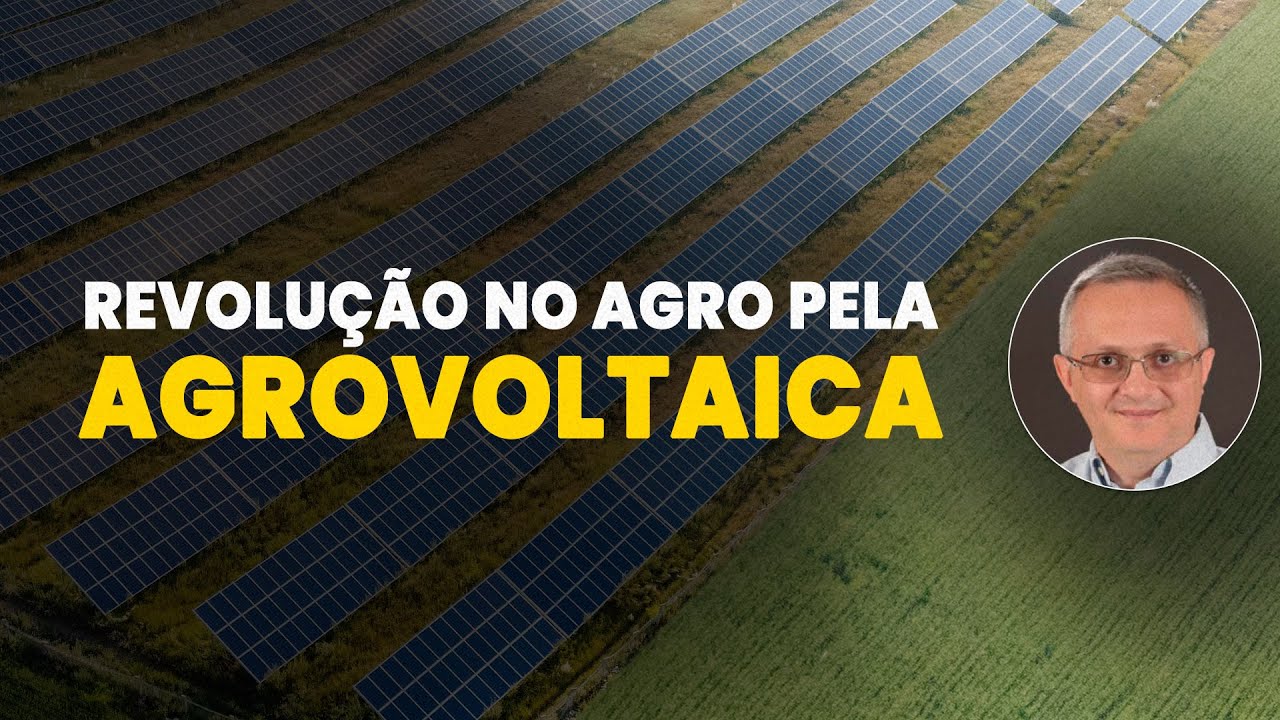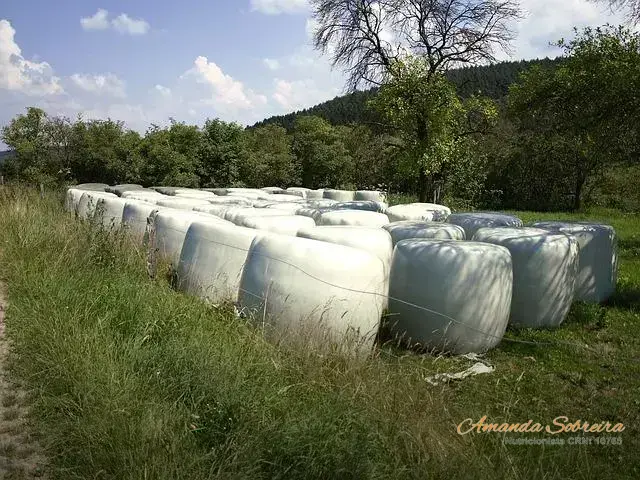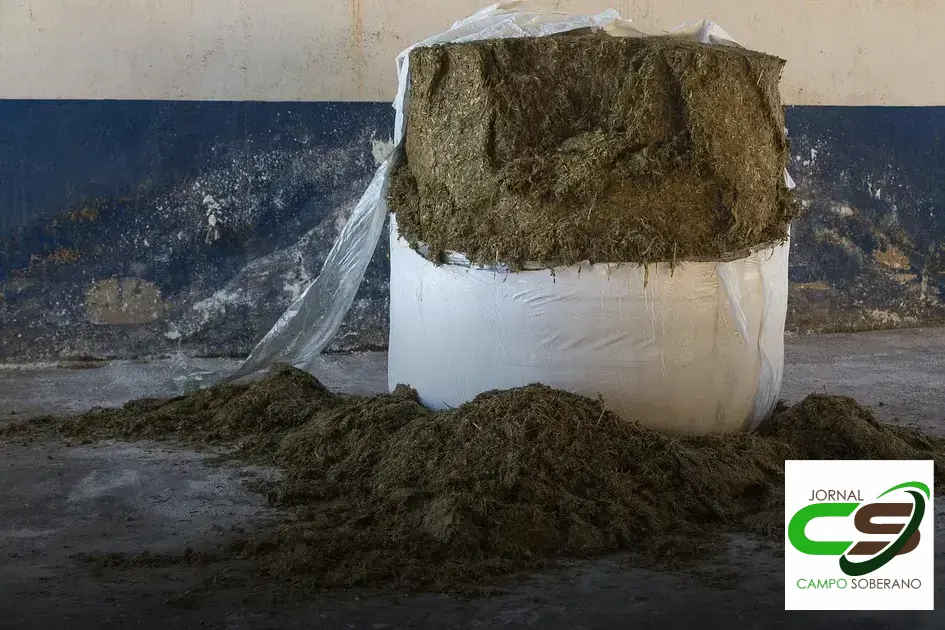Agri Voltaics: Revolutionizing Agriculture with Dual Use Technology
A New Approach to Land Optimization
Optimizing Solar Radiation for More Efficient Agriculture and Energy Production
The concept of Agri Voltaics is revolutionizing the way we approach land use for agriculture and energy production. It involves the dual use of land for co-generation of food and energy, by optimizing solar radiation for more efficient use. As an associate professor of soil biophysics at the University of California Davis, I have been at the forefront of this cutting-edge technology. In this post, I will delve into the importance and potential of Agri Voltaics, its impact on sustainable agriculture, precision agriculture, and its role in revolutionizing the way we produce food and energy. Join me as we explore this innovative approach to land optimization.
1. Qual é a importância da tecnologia Agrivoltaica na agricultura sustentável?
Resposta: A tecnologia Agrivoltaica contribui significativamente para a prática agrícola sustentável, proporcionando benefícios como efeito de sombreamento, redução da temperatura, menor evapotranspiração e maior retenção de umidade no solo.
2. Quais são os desafios da integração da agricultura de precisão com a tecnologia Agrivoltaica?
Resposta: Um dos desafios é que os painéis solares podem criar uma barreira natural para o uso de drones, mas a infraestrutura dos painéis solares permite a instalação de câmeras para substituir a necessidade de drones para monitoramento.
3. Em que tipos de climas a tecnologia Agrivoltaica é mais vantajosa?
Resposta: A tecnologia Agrivoltaica é mais vantajosa em áreas com maior radiação solar do que aquilo que as culturas necessitam, além de ser favorável em áreas com climas mais áridos onde a água é escassa.
4. Quais são os principais benefícios da implementação da tecnologia Agrivoltaica?
Resposta: Os principais benefícios incluem a produção de alimentos e energia no mesmo local, efeitos de sombreamento e resfriamento que resultam em práticas agrícolas mais saudáveis e sustentáveis.
5. Como a tecnologia Agrivoltaica está evoluindo e quais são as perspectivas futuras?
Resposta: A tecnologia Agrivoltaica está evoluindo através de estudos de próxima geração, que buscam otimizar diferentes espectros de luz para melhorar a eficiência na produção de alimentos e energia. A perspectiva futura é que a Agrivoltaica desempenhará um papel revolucionário na agricultura em áreas com alta radiação solar.
Desenvolvimento da Agricultura e Economia de Energia com a Agri-Voltaics
A agricultura voltada para a produção de energia não é um conceito novo, sendo mencionado na literatura desde a década de 80, mas ganhou muito destaque a partir de 2010-2011. Essencialmente, trata-se do processo de otimizar a terra para a co-geração de agricultura e alimentos no mesmo local. O objetivo é analisar a radiação solar que incide sobre a terra e verificar se há mais do que o suficiente para as culturas plantadas. Se a resposta for afirmativa, é possível colher o excedente para gerar energia no mesmo local onde os alimentos são produzidos. Geralmente, as terras agrícolas recebem mais luz do que o necessário para as culturas plantadas. Nesse cenário, a Agri-Voltaics se apresenta como uma forma de otimizar esse excedente de luz.
Compensando o Excedente de Luz
Para compensar o excedente de luz, a solução é simples: mais água. O excesso de luz faz com que as plantas transpirem mais água ao abrirem seus estômatos para realizar a fotossíntese. A Agri-Voltaics surge como uma forma de otimizar esse processo. Ao invés de perder água devido ao calor excessivo, é possível instalar painéis solares que proporcionem um leve efeito de sombreamento, reduzindo a quantidade de radiação que atinge as plantas e, ao mesmo tempo, gerando eletricidade.
Dualidade de Uso da Terra
O conceito da Agri-Voltaics está diretamente relacionado à dualidade de uso da terra. Ao invés de transformar parte da terra em uma fazenda solar, como é feito com a tecnologia fotovoltaica clássica, a Agri-Voltaics consiste em utilizar a mesma localização para a produção de alimentos e energia. Isso otimiza o uso da terra, proporcionando uma solução tecnológica eficiente que pode ser aplicada a diversas culturas, desde que haja um excelente aproveitamento da luz solar.
Eficiência e Sustentabilidade
A Agri-Voltaics pode contribuir significativamente para a agricultura sustentável. O efeito de sombreamento e resfriamento resultante do microclima durante o dia reduz a temperatura do solo e, consequentemente, a evapotranspiração. Isso pode levar a práticas mais sustentáveis, refletindo em uma maior retenção de umidade do solo e em práticas agrícolas mais equilibradas.
Integração com a Agricultura de Precisão
Embora a Agri-Voltaics possa integrar-se bem à agricultura de precisão, ela também apresenta desafios, como a barreira que os painéis solares criam para o uso de drones. No entanto, a infraestrutura para a instalação de painéis solares também permite a implementação de câmeras, substituindo a necessidade de drones para monitoramento.
Estudos Piloto e o Futuro da Agri-Voltaics
Cada área é única em termos de clima, radiação solar, solo e condições locais, o que torna importante a realização de estudos piloto em diferentes regiões. A tecnologia da Agri-Voltaics tem potencial para revolucionar a agricultura, especialmente em áreas com grande incidência solar. Com mais atenção e investimento, acredita-se que a Agri-Voltaics pode contribuir para um aumento na produção de alimentos e energia de forma mais eficiente e sustentável.
A perspectiva do professor é que a Agri-Voltaics desempenhará um papel importante na revolução agrícola, aumentando a produção de alimentos e energia de forma eficiente e sustentável. O incentivo a mais estudos e a colaboração com diferentes áreas e países, como o Brasil, é essencial para o desenvolvimento dessa tecnologia inovadora. Com isso, espera-se que a Agri-Voltaics contribua para um futuro mais promissor na agricultura e na produção de energia.
Este texto não reflete, necessariamente, a opinião do Jornal Do Campo
Frequently Asked Questions
1. What is Agri Voltaics?
Agri Voltaics is the process of optimizing land for the co-generation of agriculture and food on the same location, utilizing solar energy to create electricity while also producing crops.
2. What crops can be used with Agri Voltaics?
Agri Voltaics can be used with any crop as long as the location receives more solar radiation than what the crops need for biomass production and target yields. It has been tested with crops like tomatoes, basil, lettuce, and peppers.
3. How does Agri Voltaics impact sustainable agriculture?
Agri Voltaics can contribute significantly to sustainable agriculture by creating a microclimate that reduces temperature, leading to less evapotranspiration and healthier soil. This can result in more sustainable practices and soil moisture retention.
4. What are the future advancements in Agri Voltaics?
Future advancements in Agri Voltaics include optimizing different spectra of light for biomass production and energy generation, as well as revolutionizing agriculture in areas with excess solar radiation.
5. How can I get involved with Agri Voltaics research?
If you are interested in Agri Voltaics research, you can contact the lab at the University of California Davis to inquire about potential opportunities for visiting scholars, students, and postdocs.
Foreign Foreign Foreign foreign I’m an associate professor of soil biophysics at the department of land air and water resources at University of California Davis Is Not A New Concept it was mentioned back in the 80s in the literature but it gained a lot of traction in the literature from 2010
2011. it is basically the process of optimizing the land for the co-generation of Agriculture and food on the same location so we look at the incoming solar radiation and we try to see is there enough or more than enough solar light that is incoming to the land beyond what the
Crops that we are planting need and if the answer is yes then we can harvest the extra for creating energy on the same land that is providing us with food I’m gonna just right so again it’s because uh in our agricultural land in many cases we receive more light than what is needed
Now how can we compensate for that extra light we pay more water basically the extra light we will have will make the crops transpire more lose more water as they open their stomatos for receiving the photons for photosynthesis and the the way the Agri voltaics came
As a way to optimize that so instead of losing water for extra heat that is not producing biomass why not put some solar panels that will create a slight shading effect take part of the solar radiation from coming into the plants and heating them and with that create electricity and add more
Efficiency to the land foreign that’s a great question agriful takes is basically the Dual use of the land so we are using the exact same location for the code generation the co-production of food and energy whereas the classic photovoltaic technology transforms part of the land part of your farm into a
Solar farm while you’re doing the other part your your normal or classic agricultural practices so instead of mono or single use of the land for either energy or food production Agri voltaics is a dual use you generate energy and food on the same spot perfect technology technology
Yeah it can be used with any crop as long as you are in a location where there is more sun that is coming to your crops than what your crops really need for building their biomass and producing uh the the target yields that you’re looking for so uh Agri voltaic is most
Efficient when the right climatic and crop physiological properties soil properties and all different properties coexist in one location I did a tomato trial but there is a wide range of crops that we are interested in testing for this coming summer we’re looking at a wider range of shade tolerant to shade loving
Crops like basil and lettuce for example maybe if if our budgets allow we’ll do some trials with pepper as well so the again it’s it’s it’s a it’s an optimization process between favorable climatic condition and graph physiological properties thank you respond like advertisement light and soil and
Climate in general and crop choice so we look at how much light is coming to to the land and then we look at given the soil conditions and everything and the crops of Interest how much those crops would need in terms of light for photosynthesis and biomass
Production and we compare do we get more light if the answer is yes then agree voltage is a very feasible option if we receive less light than what our crops need then agree voltage is not a good idea because you need every single Photon for photosynthesis and biomass production uh
That climate in this case will will be the main factor of course and aligning it with the crop of choice so uh I would say in areas where you have a lot of clouds uh probably will not be very favorable unless you make for Agri voltaics because
We are sharing the Light Between how much the the clouds are absorbing in terms of solar radiation and then the remaining between the crops and the uh the solar panels or the photovoltaic technology so instead of doing that I would recommend for example areas where clearer Skies or areas with more arid
Climate where water was also an issue and where agricults can help with saving some water as well that’s a great question I think agricultaics can contribute significantly to sustainable agriculture the core benefits that that come out of agricults are huge uh the uh the shade effect the uh the cooling effect that
Results from the microclimate during the day would reduce the temperature of the uh of the canopy of the soil and lead to probably less evapotranspiration this will reflect into a healthier soil into a more soil moisture retention in the soil and this will lead to a more sustainable practices how it can impact
Precision agriculture I think it can integrate very well but there are some challenges for example the solar panels create a natural barrier for the use of drones but the infrastructure of having solar panels on top also allows for putting some lines for cameras to be installed on top and replaced
The the need for drones for you know monitoring or macroscopic monitoring of fundsmokers Great question I think doing more and more of pilot studies uh every area is unique in terms of its climate in terms of its solar radiation in terms of the crops of choice soil and the different conditions that contribute to whether this is a good area for Agri voltaics or
Not so I definitely recommend trying with different climates in Brazil different crops and informing the farmers and The Growers with with data specific from Brazil Brass Monkey this is technology yeah there are so many people published in the literature our group has just published back in December a
Paper on looking at even the next generation of agricults where we not only optimize overall solar radiation but different Spectra of light so we we showed through modeling that using the red photons for uh for biomass and photosynthesis is more efficient and using the blue Spectra of light for energy generation is more
Efficient the reason is the blue part of the spectrum has higher energy per photon than the red part of the slide Spectrum what the crops want for photosynthesis is photons so they don’t care about how many how much energy is in it so if you give the crops the red photons they will
Transpire last and produce a similar amount of biomass and then you can harvest the part with higher energy and at the same time create more efficient electricity out of it again this all works if you have more photons than what you need if if you have less than agreeable things is not a
Good choice uh we always have new fundings and uh looking for visiting Scholars students and postdocs so uh if if you are interested feel free to contact my lab and if if we have open vacancies I’ll be more than happy to welcome takes is uh going or I I
Project that agricults will will play a major role in revolutionizing agriculture particularly in areas where more solar radiation than what the crops need I think it’s uh it’s an understudied uh area that requires more and more attention from our side and hope that with more attention to
Agricultaics that we can help grow more food and produce more energy with more efficient ways on the same plot of land perfect thank you for your time your explanation about we appreciate your time and everything here so if you have something to you need something about us in Brazil we
Are opened already thank you and I hope that was helpful perfect and professors you don’t even stage the California dates and situating myself for myself universities help us off ices is foreign







assistindo hj 04/08/23…. buscando conhecimento. grato